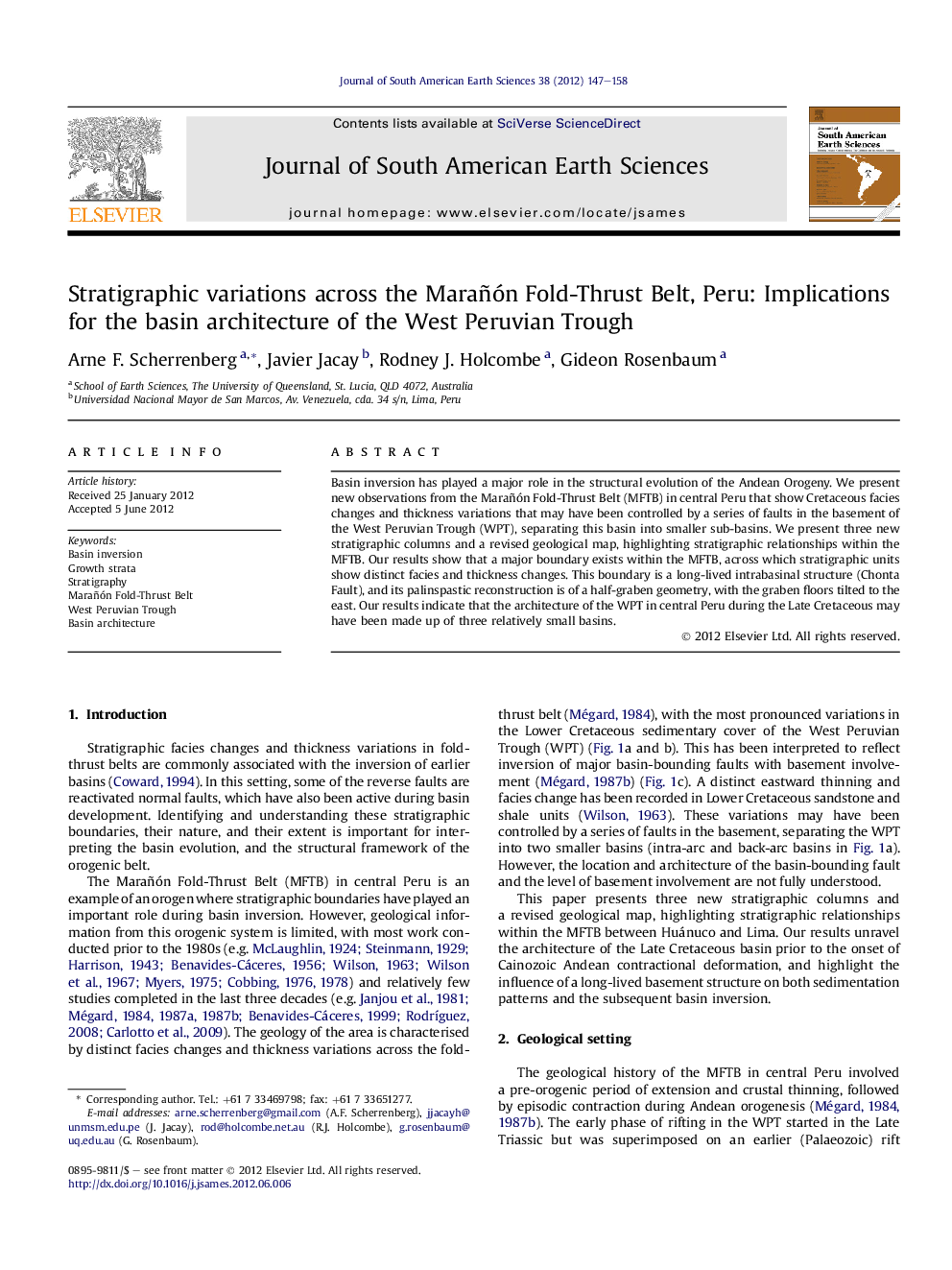| Article ID | Journal | Published Year | Pages | File Type |
|---|---|---|---|---|
| 4682532 | Journal of South American Earth Sciences | 2012 | 12 Pages |
Basin inversion has played a major role in the structural evolution of the Andean Orogeny. We present new observations from the Marañón Fold-Thrust Belt (MFTB) in central Peru that show Cretaceous facies changes and thickness variations that may have been controlled by a series of faults in the basement of the West Peruvian Trough (WPT), separating this basin into smaller sub-basins. We present three new stratigraphic columns and a revised geological map, highlighting stratigraphic relationships within the MFTB. Our results show that a major boundary exists within the MFTB, across which stratigraphic units show distinct facies and thickness changes. This boundary is a long-lived intrabasinal structure (Chonta Fault), and its palinspastic reconstruction is of a half-graben geometry, with the graben floors tilted to the east. Our results indicate that the architecture of the WPT in central Peru during the Late Cretaceous may have been made up of three relatively small basins.
Graphical abstractFigure optionsDownload full-size imageDownload as PowerPoint slideHighlights► Facies/thickness changes occur across a boundary in the Marañón Fold-Thrust Belt. ► The documented variations suggest important structural implications. ► Basin inversion occurred on the long-lived intrabasinal structure. ► The geometry of the boundary depicts a half-graben. ► A revised architecture of the West Peruvian Trough is proposed.
